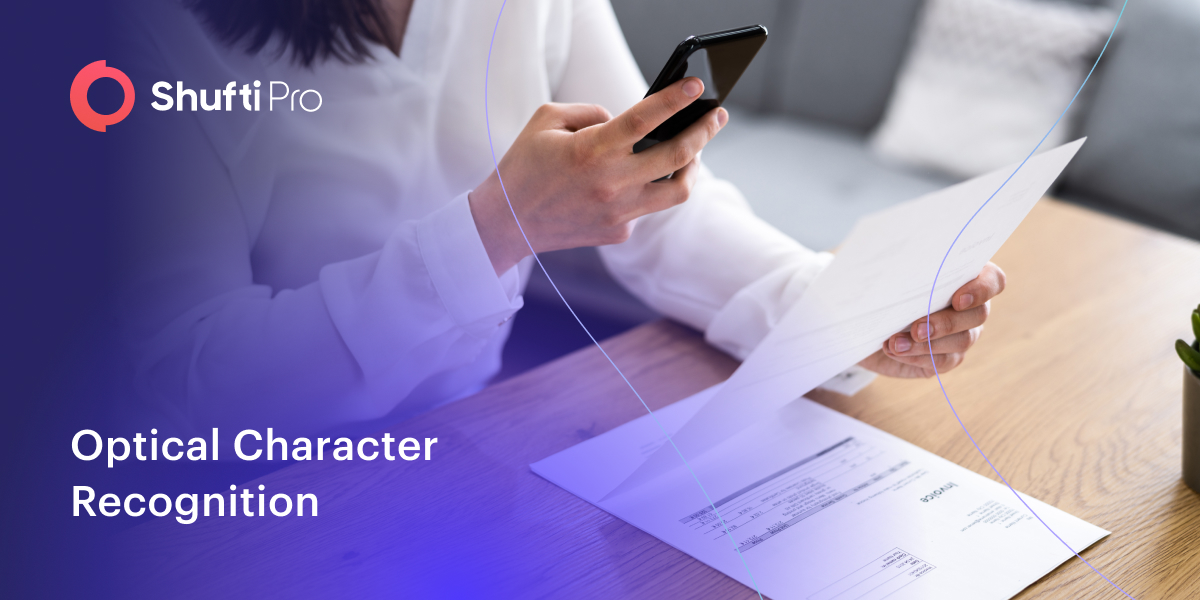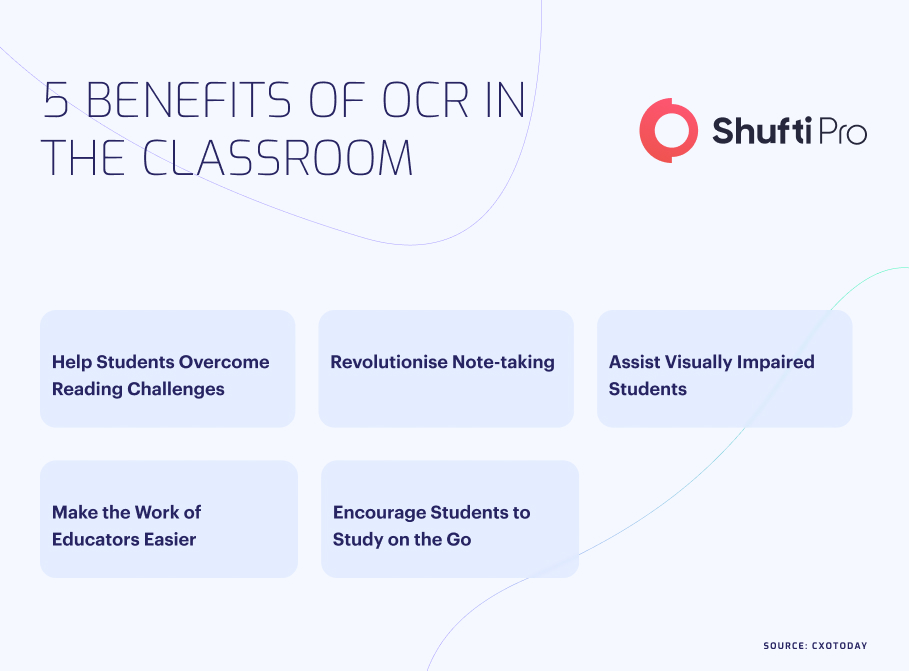5 Benefits of Optical Character Recognition in the Classroom

Optical Character Recognition (OCR) goes beyond just processing documents and boosting businesses’ security. The incredible is now leveraged in creative ways – helping students access lectures by turning handwriting into digital content.
OCR is one of the many technologies that are paving the way for modern classrooms. Optical character recognition is a sophisticated way of creating an inclusive learning environment for differently abled students.
Let’s have an insight into why the educational sector should consider investing in OCR technology.
Digging Deeper into Optical Character Recognition
OCR is the electronic or mechanical conversion of images of typed, printed, or handwritten text into digital format. It’s a standard method to digitise printed text to be edited, stored, and searched electronically and used in different machine learning processes such as cognitive computing and text-to-spreadsheet conversion.
OCR technology is being used in the healthcare, tourism, retail, logistics, government, transportation, manufacturing, and educational sector. Increasing adoption of optical character recognition across diversified sectors is what drives the OCR market. The global OCR market is forecasted to touch $39,655 million by 2030 at a Compound Annual Growth Rate (CAGR) of 16% from 2022 to 2030.
How Does OCR Solution Work?
Retrieving data from files and then turning it into digital form is a tedious task that requires hours of manual work. However, with the evolution of OCR technology, it is done quickly and efficiently.
The 3-step process of optical character recognition is:
-
- Pre-screening: The technology converts a physical document into a machine-readable format and removes any undesired aberrations.
- Data Extraction: Artificial Intelligence (AI) analyses an image’s dark portion to recognise numerals and letters using pattern and feature recognition techniques.
- Post-screening: AI checks the documents for any flaws and corrects them.
How OCR Solution Benefits in the Classroom
OCR, the data-capturing technology, transforms written text into a machine-readable format. For this very reason, many offices use this technology to help them manage piles of paper documents in no time. Optical character recognition helps teachers and students in the classroom too. Here is how:

1. Help Students Overcome Reading Challenge
As per the International Dyslexia Association, 6-7% of school-age children qualify as having some kind of Learning Disability (LD) and at least 85% of the challenges fall in writing or reading. The text-based curriculum proves to be an immense challenge for those students.
However, OCR comes as a ray of hope for those students, allowing them to listen to homework, lecture, or any notes rather than reading it. Moreover, it makes a searchable digital document enabling students to easily check the definition of any word, or bookmark different sections of the content. Optical character recognition is a promising solution, empowering students to overcome the challenges of reading any piece of information.
2. Revolutionise Note-taking
OCR can recognise any kind of handwritten text and this is due to the development of the MNIST Database. The database comprises 60,000 examples of handwritten numbers and letters derived from US Census archives. The potential to recognise handwritten text and convert it into a digital version is precisely what makes optical character recognition a good investment in offices that rely on hard copies as well as digital documents. It is a smart solution for schools that helps students transform their notes into accessible, digital documents to help them in their studies.
3. Assist Visually Impaired Students
Digital text is not restricted to a particular size, colour, or font means it is malleable compared to printed materials. And one of the most significant applications of this technological advancement is in the schools where it is helping visually impaired students.
Although optical character recognition technology was not originally developed for those individuals who’re visually impaired, successfully serves them. The data-capturing technology offers visually impaired and blind individuals the ability to scan printed text and has it uttered back in synthetic speech. This gives visually impaired ones access to a number of written documents.
4. Make the Work of Educators Easier
Managing a classroom of diverse students is not an easy task for educators. There are lectures to prepare, papers to grade, and the list goes on. However, OCR is a great solution for teachers helping them do tasks quickly and more efficiently. Optical character recognition makes it easy to turn a chapter, copy, or article into digital form so that teachers can quickly disseminate it to the students. Educators no longer have to retype material that they need, OCR does it all. That leaves spare time to focus on creating classrooms a better experience for the students.
5. Encourage Students to Study on the Go
Students get bored reading and dedicating specific time and space to read textbooks. This is where OCR technology steps in, enabling students to listen to what is written in their textbooks anytime anywhere during a commute, on lunch, or while they’re on a walk. How OCR makes this happen? Well, the technology converts physical text into audible form, making students access their study materials while using their time efficiently.
How Does Shufti Fit in the Puzzle?
Shufti offers an OCR solution to educational institutions, offices and classrooms alike. Not only it helps capture data but also turns it into a digital version to access it anywhere anytime.
Here’s why Shufti’s OCR solution is a good investment:
- Quick image-to-text data extraction
- Support multi-lingual documents
- Scan the structured and unstructured documents
- Global coverage for 150+ languages
- Available in 230+ countries and territories
- Accuracy rate of 99+%
Still, confused about how an OCR solution works?










